Eerie sci-fi story by Olson Kundig wins architecture fairytale competition
Seattle firm Olson Kundig Architects has won first place in a competition to create an architectural fairytale, with its story about a dead architect who is resurrected and dropped into a futuristic urban landscape.
The contest asks designers to write a fictional story and produce accompanying visuals. Titled Welcome to the 5th Facade, the winning tale and its images were conceived by a team of employees led by firm principal Alan Maskin.
"Welcome to the 5th Facade uses science fiction as it is traditionally used, as a modality to visualise and imagine a particular future in terms of both the pitfalls and the potential," said Maskin.
The story "launches us headlong into the future – a future that is similar enough to our own yet ripe with new challenge, opportunities and issues," added the competition organisers.
The tale begins with a male architect who dies from a heart attack while watching a play. His body is transferred to the Al-Cryo Life Extension Foundation, where his head is severed from his body and then frozen and stored for future resurrection.
Decades later, his head is brought back to life and attached to a new body.
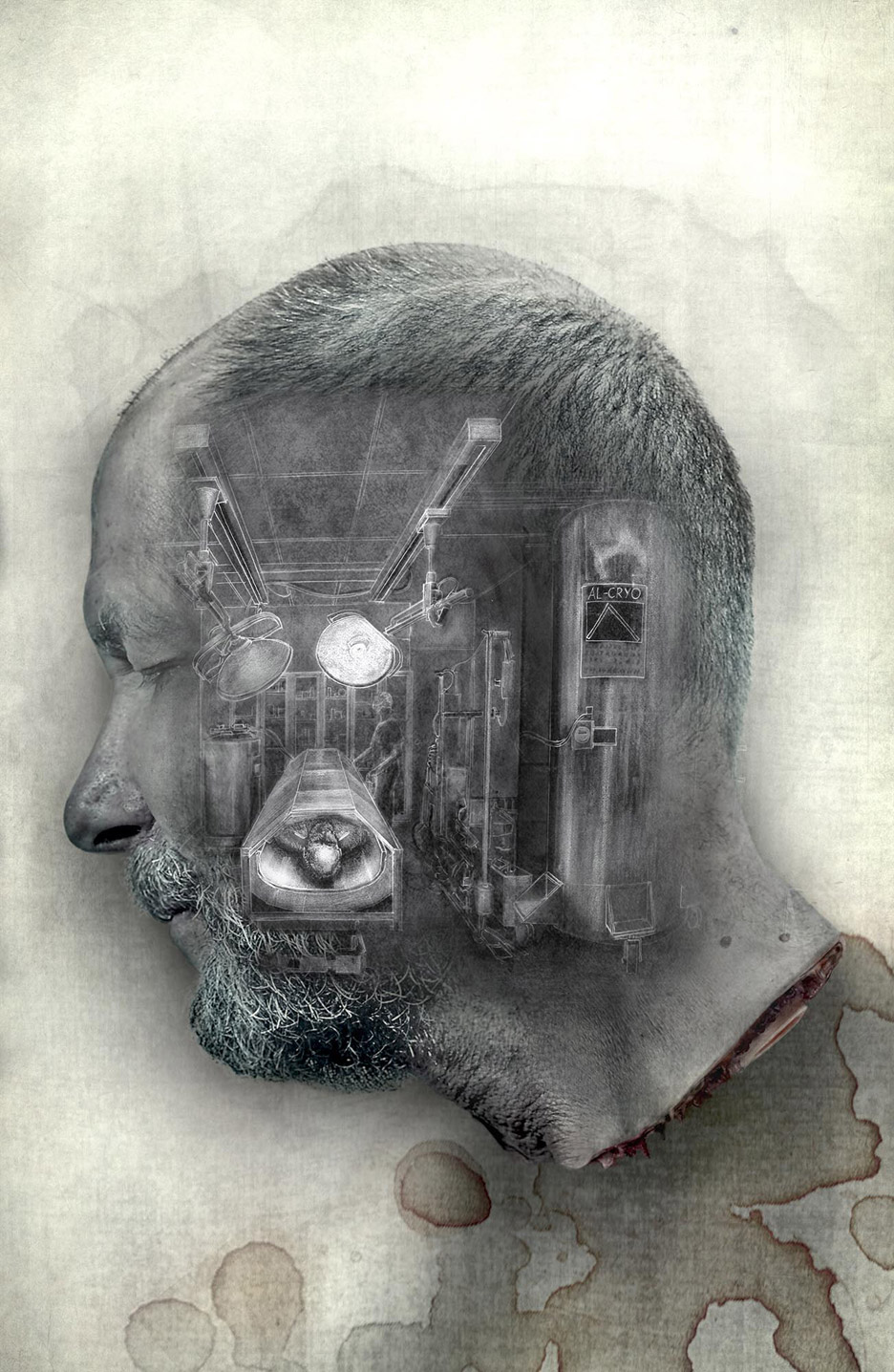
With no connection to family or friends, he is placed within a futuristic Seattle, carrying only a suitcase full of basic necessities such as clothing and coupons for food and boarding. He also wears an augmented reality headset, which helps him navigate a darkened city.
Familiar buildings remain, including his former architecture office. But its facade is now a vertical farm, where a conveyor system carries planters "out of the shadows and into the sunlight and back again".
Hovering about this conceptual city is a new layer, the 5th Facade, which consists of rolling green hills, public parks, swimming pools and farms, along with water collectors, solar arrays and wind turbines.
Guided by his headset, the architect explores his new terrain and learns new work tasks, such as harvesting food.
He contemplates whether he wants to continue living in this strange dystopian world, which lacks schools and children, where nightfall never comes, and where the air is always chilly. Ultimately, he attempts to commit suicide.
Maskin said the idea for the 5th Facade stemmed from his firm's interest in urban rooftops, "the largely neglected uppermost layer of cities".
"The idea of applying a narrative filter – to both built and conceptual projects – became another way to look at and critique design ideas," he said.
In addition to Maskin, the project team members were Jerome Tryon, Kevin Scott, Gabriela Frank and Katie Miller.
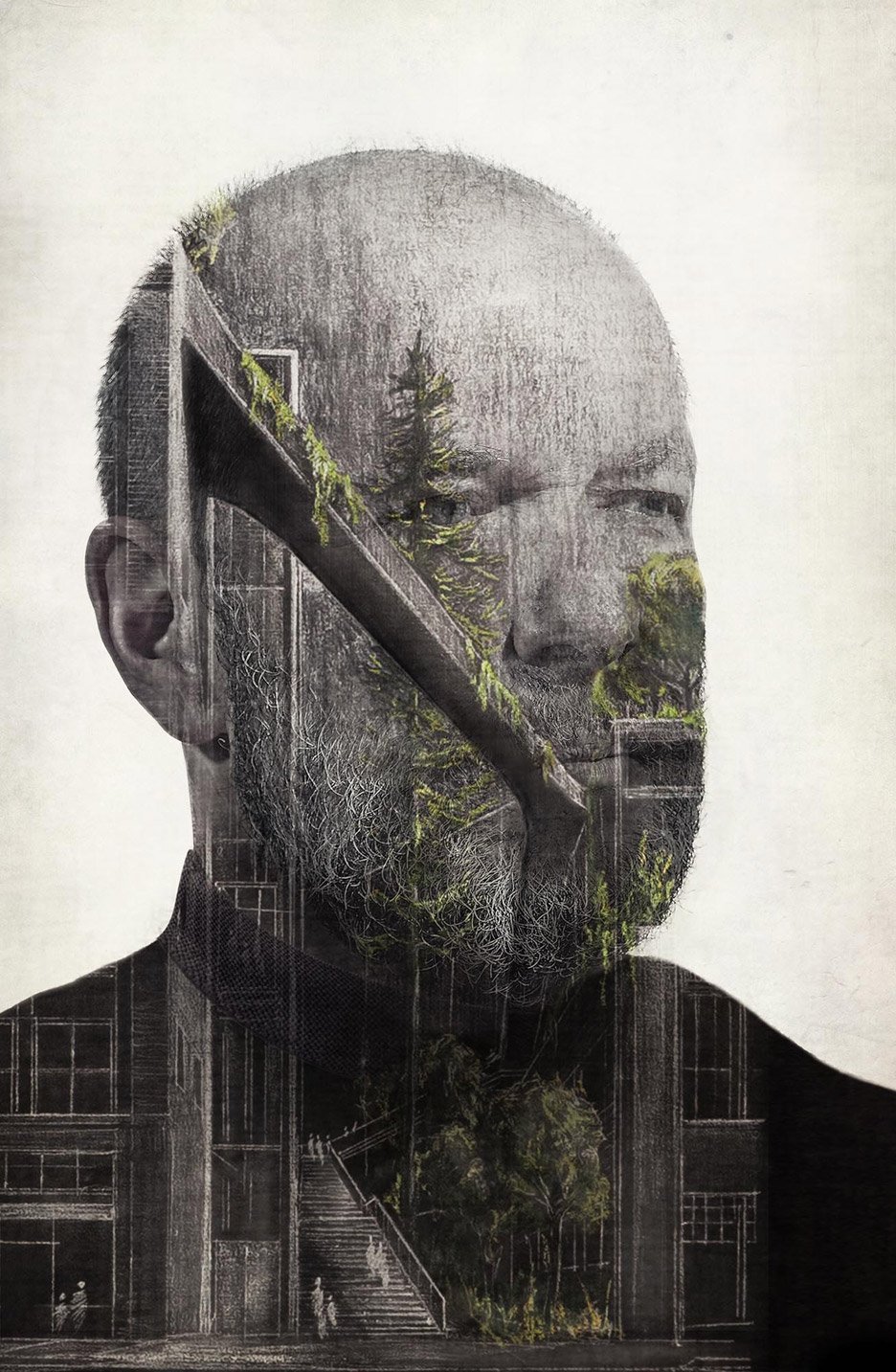
Olson Kundig was founded in 1966 and is well known for its award-winning modern homes set in rural settings. The firm has also designed a number of urban projects, including a tower in Seoul, South Korea.
The Fairy Tales competition, now in its third year, was organised by Blank Space, an online media platform for architecture that was established in 2013.
Last year's winner was writer Kevin Wang and artist Nicholas O'Leary, who imagined a fantasy world based on Alice in Wonderland. This year's contest drew 1,500 participants, representing 67 countries.
Jurors included Hans-Ulrich Obrist, co-director of the Serpentine Galleries; Elizabeth Diller, founding partner at Diller Scofidio + Renfro; and Aaron Betsky, dean of the Frank Lloyd Wright School of Architecture.
The second place prize went to Hagai Ben Naim, an architect originally from Jerusalem, whose story Parisian Lullaby addresses how current events have affected policy, park space and the public domain in the French capital.
Third place was awarded to Kobi Logendrarajah, an architecture student at the University of Waterloo. His story, 12 Nautical Miles, imagines how architecture might be "created, leveraged, traded and grown" in a no-man's land.
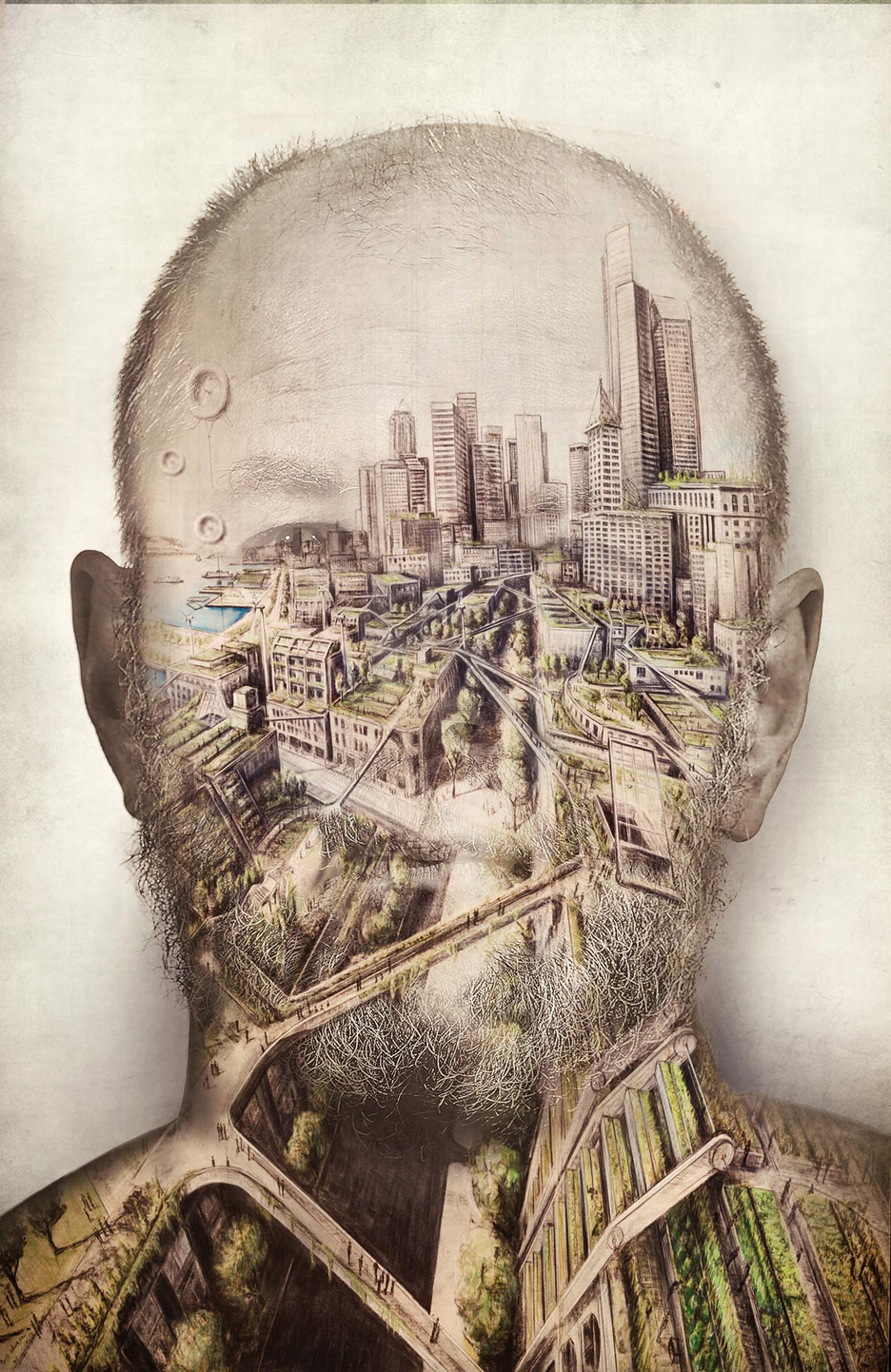
"Those who submitted to the competition are not only impressively talented, they are courageous innovators that have pushed the envelope of architecture as we know it," said Blank Space founders Matthew Hoffman and Francesca Giuliani.
"These are the most important topics for architecture to address, and they have the power to reshape the business of architecture, its priorities and its future direction."
Select submissions will be featured in the third volume of Fairy Tales: When Architecture Tells a Story, due out in July. The book was designed by Bruce Mau, with a cover by Spanish artist Vicente Garcia-Morillo.
Scroll down to read the story text:
Welcome to the 5th Facade
My cryonic technician described what had happened:
"A myocardial infarction began midway through Act 1 of Arthur Miller's A View from the Bridge at the Phoenix Playhouse. Although cardiopulmonary support kept your heart pumping for the 30-minute ambulance drive, you were pronounced dead upon arrival. The stainless steel bracelet on your left wrist was inscribed with Cryonic Alert. The card in your wallet outlined medical protocols which, in turn, triggered your immediate transfer to the Al-Cryo Life Extension Foundation."
"Your naked body was submerged in an ice bath. Profusion – the process of removing the blood from your body – commenced, and your blood was replaced with a non-toxic solution that preserves cells when they freeze."
"Your head was severed, a relatively new procedure at the time of your death, and positioned vertically alongside your body in a cylindrical stainless steel tank where incremental cooling brought your temperature to -196 degrees Celsius."
"Your tank was stored with hundreds of others for the many decades that comprised your cryopreservation."
My cryonic tech didn't call it a deep freeze, she called it "big sleep". I don't remember waking up. Mostly just flashes of light interspersed with what I assume were sleep/dream cycles. I was deeply sedated during the months of healing after the reattachment. And then there were tests. Scores of tests. Medical, physical, and psychological. For nearly two months my technician was the only other thing I was aware of. While staring out the window from my bed one day I saw something moving against the sky and I spoke: "…biiiiii-iiird…..bird…" Baby's first word.
"Patient crossed Milestone 149," she whispered into her headset.
After that day, there were more people, technicians mostly, followed by a slow introduction to other patients. Group therapy sessions for the reborn. The few who had family to contact were considered strangers by the very people they desperately hoped would now welcome and care for them. My great-great-great-grandniece supposedly lives in what used to be called Chandigarh in what is still called India. "She has not responded to our attempts for contact," I was told. "This is not uncommon".
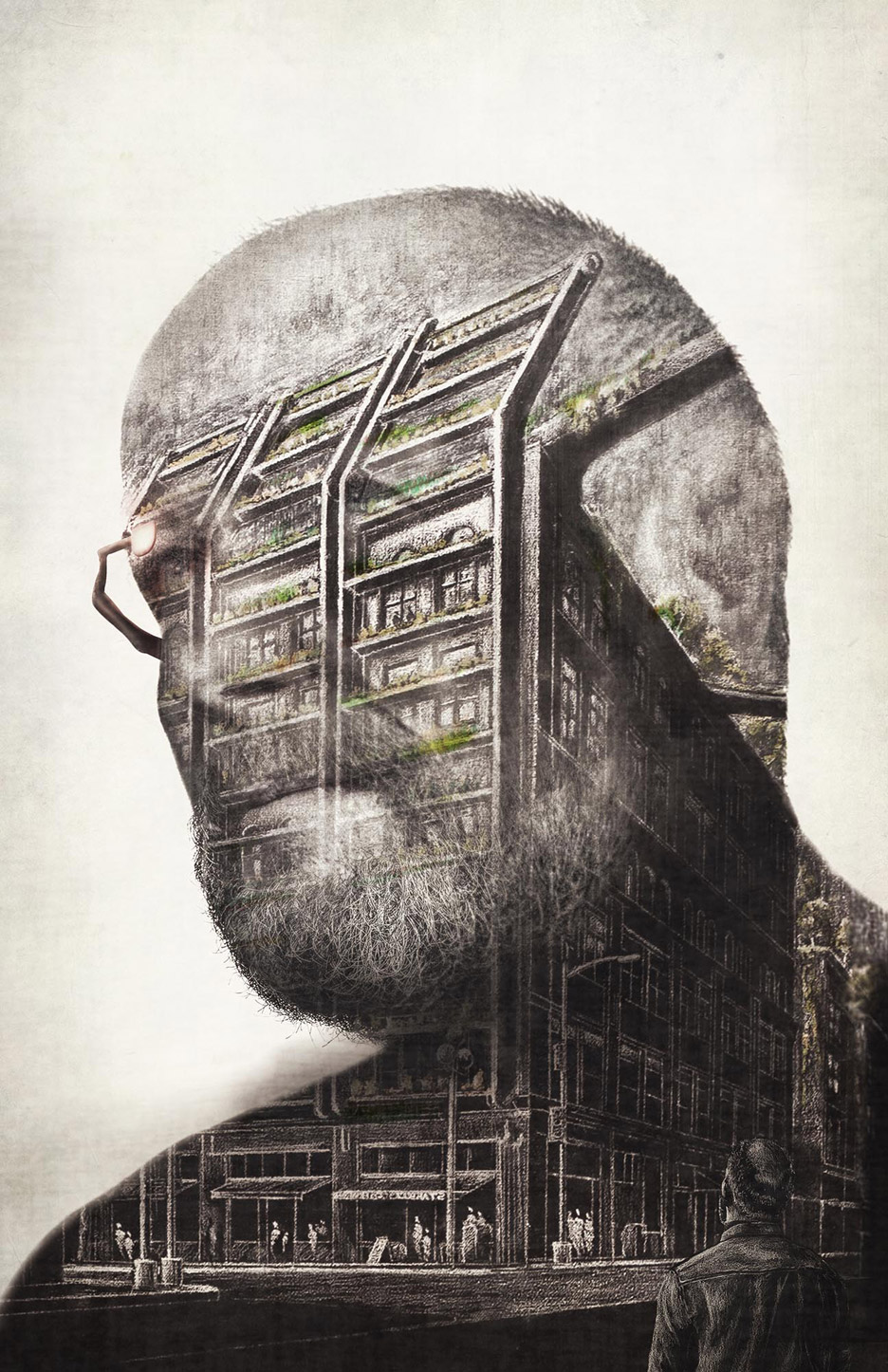
Orphans like me at Al-Cryo have a predicament: the full extent of long-term cryonic care planning in my era led only to rebirth. For most of us, personal resources and property were transferred to descendants long ago. Today, almost all global governments have stepped in to supply aid. Now, orphans receive stipends upon release that, if spent wisely, can carry us for six or seven months. We attend classes on how to operate augmented-reality headsets and weeks of re-birth survival skill courses.
A suitcase they gave me during checkout included clothing and several neckbands, a virtual bank account, coupons for food and boarding centres, a month's supply of pain medication, batteries, my old Cryonic Alert bracelet, and travel tickets.
"For patients re-entering alone, we encourage them to return to where they last lived – to be surrounded by elements that we hope will feel familiar and foster memory recall."
And what exactly do I remember? I have memories of a childhood that I assume was mine. I remember nothing during the freeze. Lately, I've started to notice that I remember things that happened yesterday, the day before that and so on.
My headset provided me with instructional video and directional guidance graphics as a layer of visual information superimposed over my view of the world. It showed me how to take public transportation, how to find and pay for food and how to find sleep centres. It woke me each morning, explained who passersby were and offered advice whenever I was puzzled. They made it feel like these were my choices.
Not everything was foreign, though. Upon returning to Seattle, the headset led me to a neighbourhood where I once owned a business. The streets were still lined with old Neo-Classical brick buildings that dated to the 19th century, but my former architecture office in the Washington Shoe Factory Building had new additive layers. The entire south facade was moving. I paused to stare up at a series of conveyance systems that comprised a vertical farm carrying vegetable planters that rotated plants out of the shadows and into the sunlight and back again. My headset played a video with animated diagrams that illustrated the step-by-step process that ran the kinetic mechanisms for photosynthesis.
The biggest change to my old neighbourhood occurred where the buildings met the sky. The instructions on my headset led me up the main stairway to an entirely new urban layer.
"Welcome to the Fifth Facade. This is where you will live and work."
During the decades that I slept, the rooftops of Seattle had changed. The grey waterproofing membranes, HVAC equipment, elevator machine rooms, long-empty water towers, and miles of ductwork were replaced with a vast pastoral landscape. Rolling green hills, public parks and swimming pools, pastures with livestock, and vegetable farms were joined by enormous water collectors, solar arrays, and wind energy turbines. Bridges, like connective tendons, unified the separate buildings into a continuous landscape. I could wander anywhere, and I did.
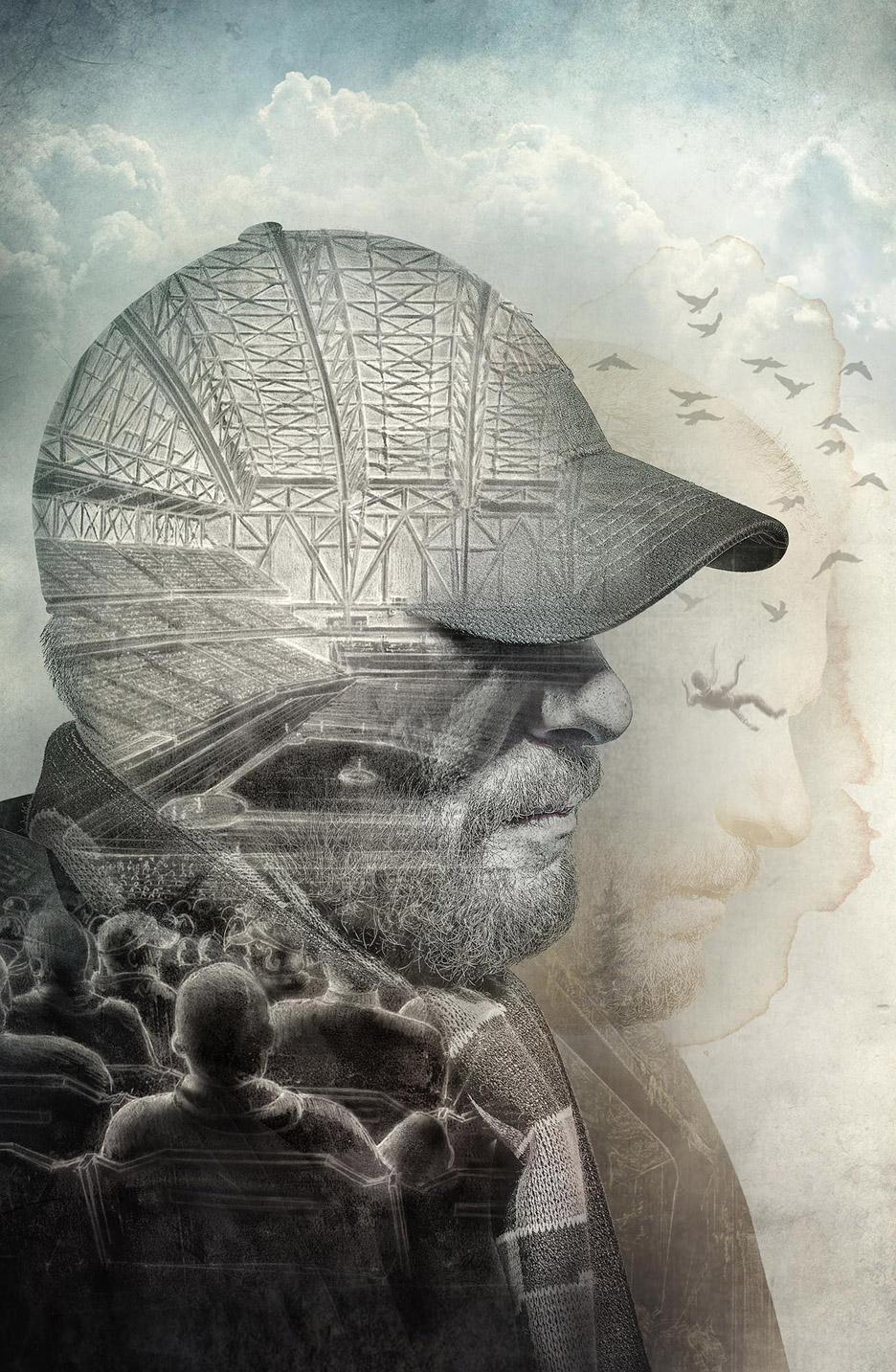
No one told me I had to work, or for how long; the headset only told me what to do when I wanted it to. In the early days, I wandered the rooftops. They were always packed with people, walking, strolling, exercising and working. I could stop anywhere along the rooftop and just start working when and if I wanted to. Depending upon where I stopped, my headset taught me new tasks and after a while I got them 90 per cent right on the first try. It never took more than two tries. When I talked with the other farmers, we mostly talked about work. Some bragged about quantities while others were just proud of what they had accomplished. We strolled through this massive urban landscape laughing and talking about the things we made that day. During one of these walks, I passed two women and one of them was reciting a Khalil Gibran poem. Our headsets helped us remember literature verbatim. "Work is love made visible…" she said.
My very first tasks involved harvesting food through the double-hung single-glazed windows of the Washington Shoe Building, whose original hand-blown glass panes had been removed long ago. I once was an architect who looked out from those windows; now, I was a farmer who reached through them.
"What happens in winter?" I said. I didn't get explanations for everything I wondered about but when I asked, "Should I pick these?" the animations guided me through every step. Soon, I could clear an entire tray of turnip greens in a single rotation without a second thought. It was hard to mess up when you were directed and redirected at every turn.
Sometimes, I noticed the absences. Night, for instance, no longer came. The constant feeling of being cold. It startled me when I realised the absence of children.
"School?" I asked. No instructions. "Children?" Nothing.
It's not as if there was no recreation, although there were never instructions on what activities I should or should not be doing. When I responded to the familiar sound of a large crowd cheering, I was guided to a stadium just south of the Washington Shoe Building. "Baseball?" I asked. The history and rules of baseball, and the statistics for each player appeared over my view of the field. A huge ovation rose when Ted Williams, "The Kid," came up to bat. "The greatest hitter who ever lived! The only player inducted into the Hall of Fame three times!" This realisation—that "The Kid" was inducted three times, three lifetime achievements, made it all clear: death wasn't obsolete, just temporary.
The Kid ran the bases with the speed of a 20 year old, which is likely what it was. Old heads on young shoulders, farmed like everything else. Neck bands were a thing we all shared. We all had them – black leather, cinched in back–since waking, I never met a person who did not.
Could I live forever? Could I continue returning to life for eternity? Would it even be possible to truly end my life? What would happen if I were to throw myself from these sinewy bridges that connect the rooftops, or use my Japanese gardening knife to slice just below the scar encircling my neck?
The decision to return, when it's your choice, is an act of liberation and extension. I loved my life and the decision for more of it felt obvious at the time. But to return repeatedly as a decision made by others. All of the farmers had old heads on young shoulders. A work-force destined to return in perpetuity.
The decision took several months to make. I completed a 12-hour shift and folded my work coat. I walked across several rooftops as my headset, in sensing my intention, tried to dissuade me.
My last memory was the free fall.